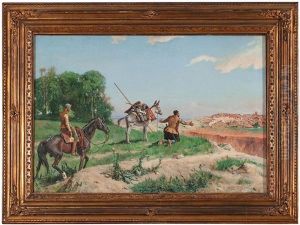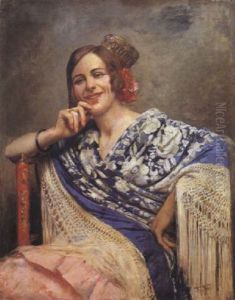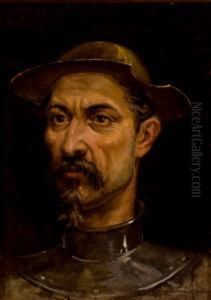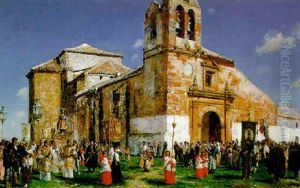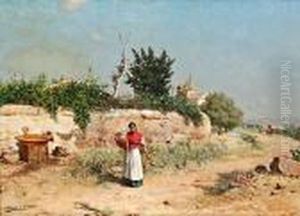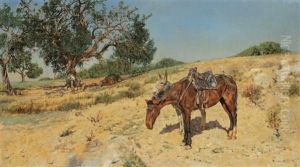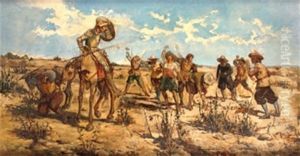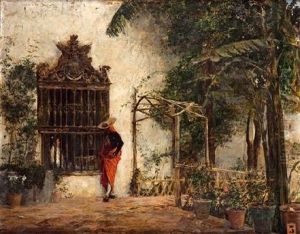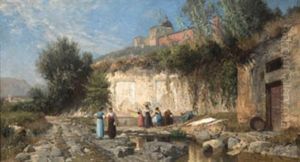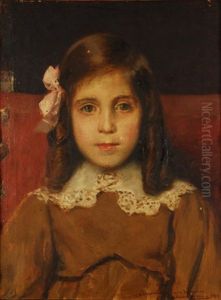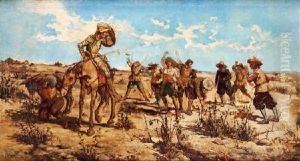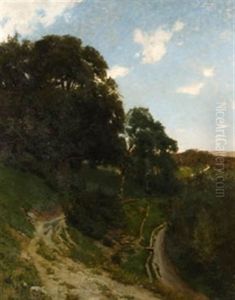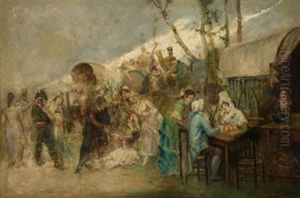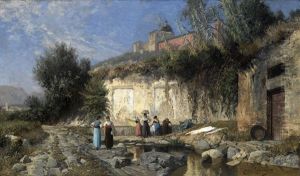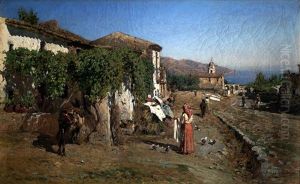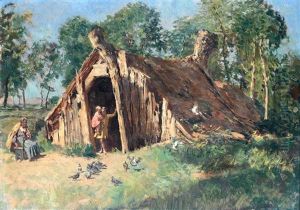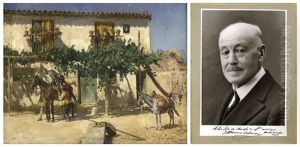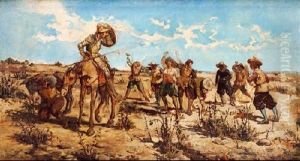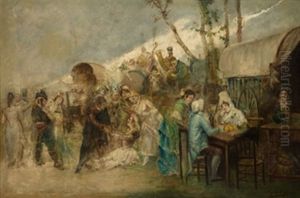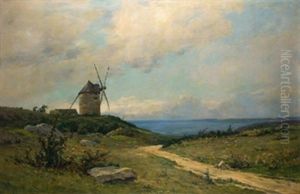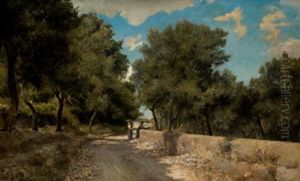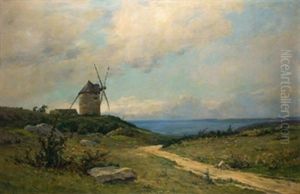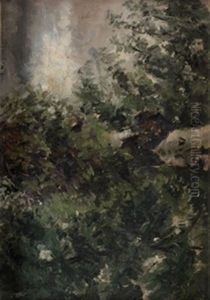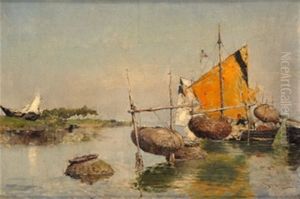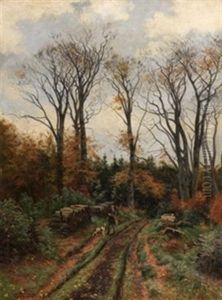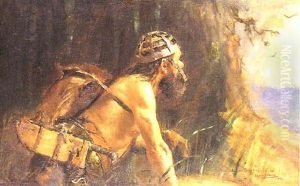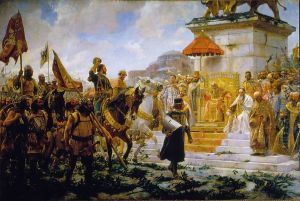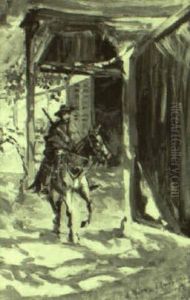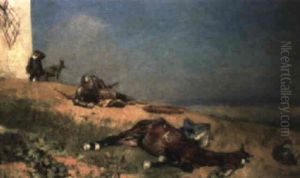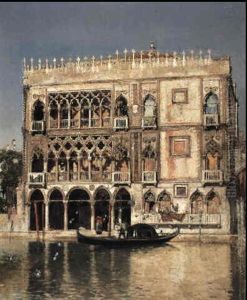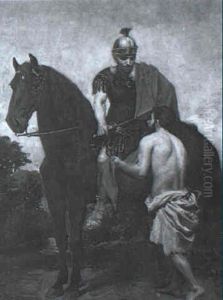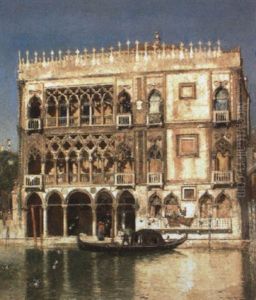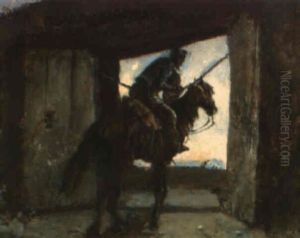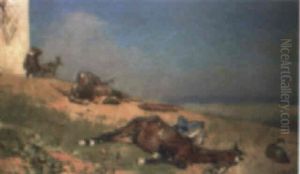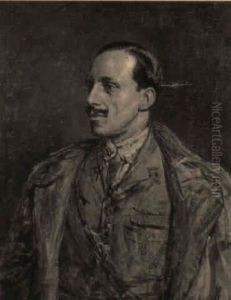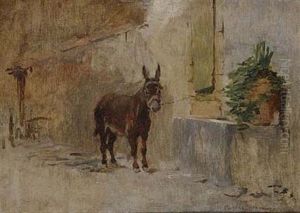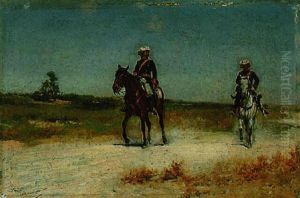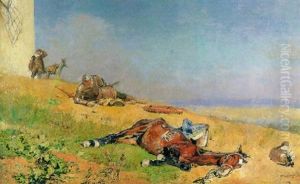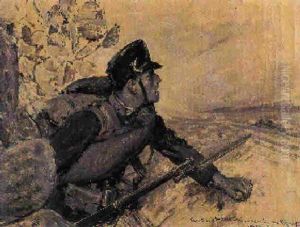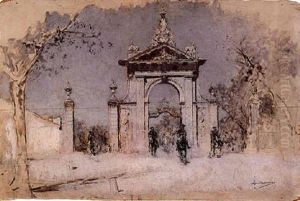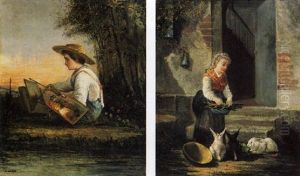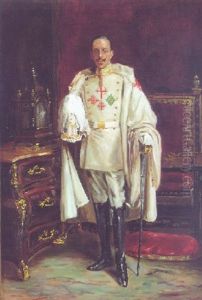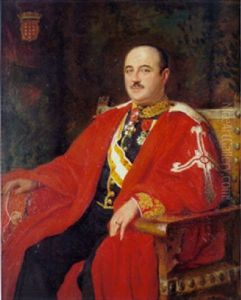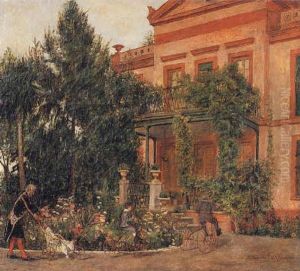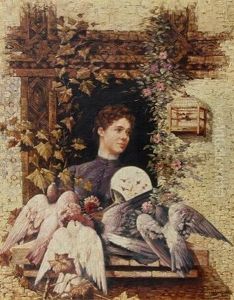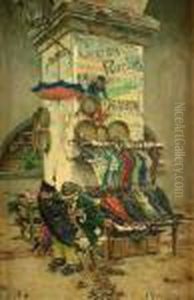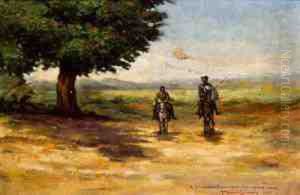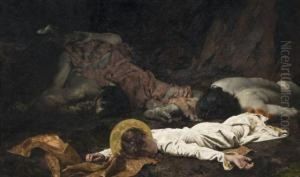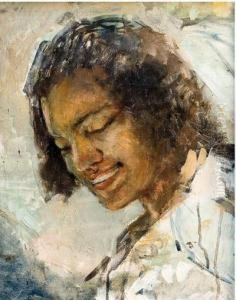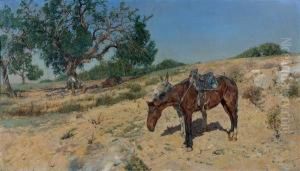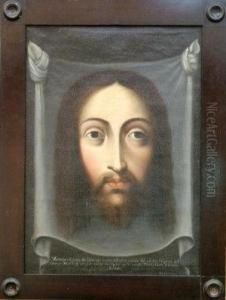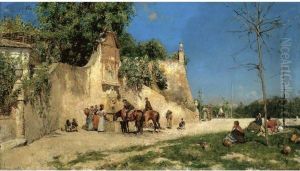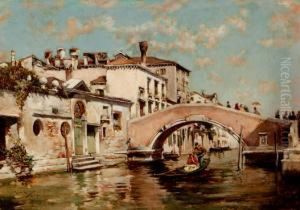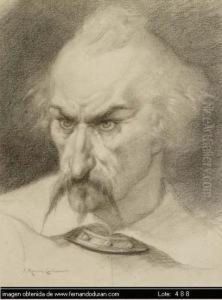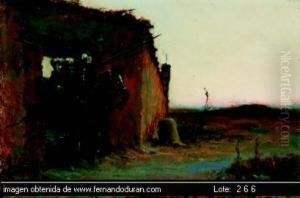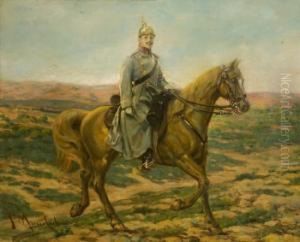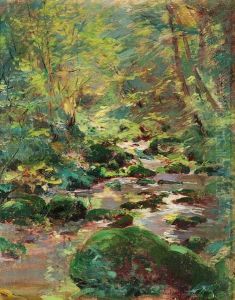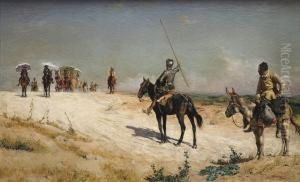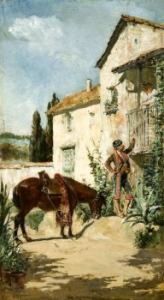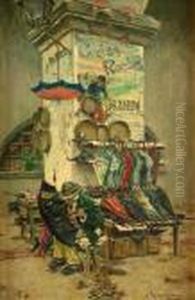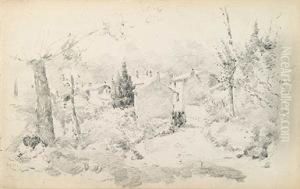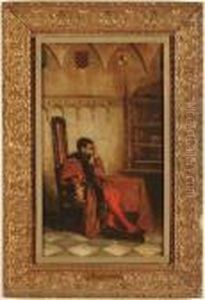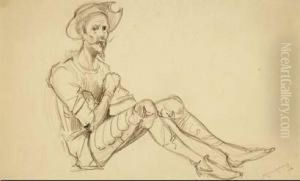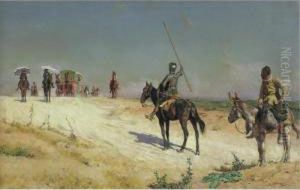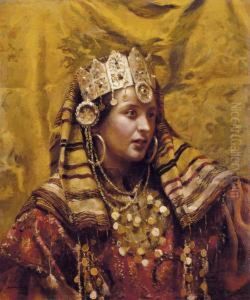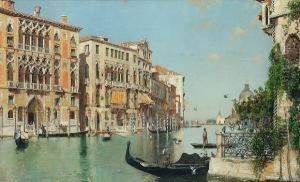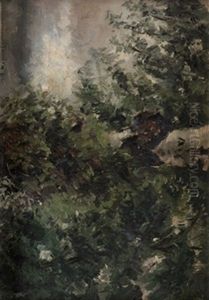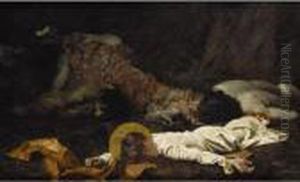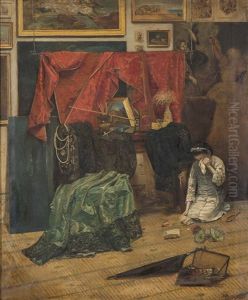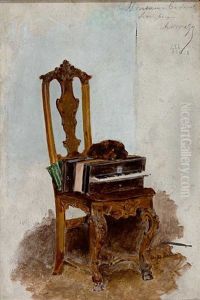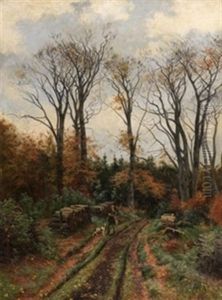Jose Moreno Carbonero Paintings
José Moreno Carbonero was a prominent Spanish painter and illustrator, born on March 28, 1860, in Málaga, Spain. He is often celebrated for his historical scenes and orientalist paintings that reflect a fascination with exotic cultures and historical grandeur. Moreno Carbonero received his artistic training at the School of Fine Arts in Málaga and later at the San Fernando Academy in Madrid. He also spent time in Rome, where he was influenced by the Italian masters and the flourishing cultural environment.
During his early career, Moreno Carbonero became known for his history paintings, which were well-received by the public and critics alike. He gained national recognition for his work 'The Surrender of Granada', which was acquired by King Alfonso XII for the Royal Collection. His paintings often featured dramatic narratives and were characterized by meticulous detail, vibrant colors, and a romanticized view of the past.
Moreno Carbonero was also a respected illustrator, contributing to periodicals and books of the time. He painted portraits of notable figures, including Spanish royalty and the intelligentsia, which further cemented his reputation as a leading artist of his era.
In addition to his artistic pursuits, Moreno Carbonero was an educator, serving as a professor at the Special School of Painting, Sculpture, and Engraving in Madrid. Among his notable students was Salvador Dalí, who would later become one of the most famous surrealist artists. Moreno Carbonero's influence on the next generation of Spanish artists was significant, as he imparted a sense of classical training and an appreciation for historical subject matter.
José Moreno Carbonero's work was part of the art movements known as Orientalism and Historicism, and he was awarded numerous honors throughout his career, including the Order of Isabella the Catholic and the Legion of Honor from France. He continued to paint until his later years, leaving behind a legacy that includes a rich body of work celebrated for its technical mastery and evocative storytelling.
He passed away on April 15, 1942, in Madrid, leaving a lasting impact on Spanish art history. Today, his works can be found in museums and private collections across Spain and beyond, where they continue to be admired for their beauty and historical significance.
